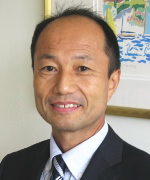Keynote Speech

Retrospective of Electric Machines for EV and HEV Traction Applications at General Motors
Dr. Sinisa Jurkovic,
Engineering Manager, Global Propulsion System,
GENERAL MOTORS COMPANY
Special Speech

Model-Based Design Meets FEA Simulation – Improving Motor Control Development using High Fidelity Motor Models
Mr. Tony Lennon,
Application Manager – Motor and Power Control, Technical Marketing,
The MathWorks, Inc.

Potential of FEM Analysis
Mr. Fumihiko Goto,
Division Manager, Consulting Engineering Div.,
Hitachi Power Solutions Co., Ltd.
Introduction
Hello, this is the Users Conference secretariat, Tomomi Igarashi.
We are pleased to announce the 23rd JMAG Users Conference.
JSOL Corporation would like the Users Conference each year to be an opportunity for users to communicate and share ideas.
A wealth of content will be provided to satisfy a range of skill levels including JMAG wizards and beginners, as well as those who have not yet participated in the Users Conference.
We have invited presenters leading in various fields to discuss the latest technology topics both in and outside the country, as well as case studies using JMAG for various sessions such as motors, optimization, and loss.
The latest version of JMAG will also be presented at this Users Conference. We hope you use this opportunity to rediscover the magic of JMAG.
For those who have not yet joined us, those who could not participate in the previous year, those who have not attended for several years, and those who join us every year – we welcome all of you.
We look forward to seeing new and familiar faces!
Overview
| Organizer | JSOL Corporation |
|---|---|
| Dates | December 7 and 8, 2016 |
| Venue |
Tokyo Conference Center – Shinagawa AREA Shinagawa 1-9-36 Konan, Minato-ku, Tokyo TEL: 03-6717-7000 https://www.tokyo-cc.co.jp/eng/index.html |
| Expected number of participants | Approximately 400 |
| Registration Fees |
JMAG Users: Free General Admission: ¥50,000 (without tax, lunch included) |






























